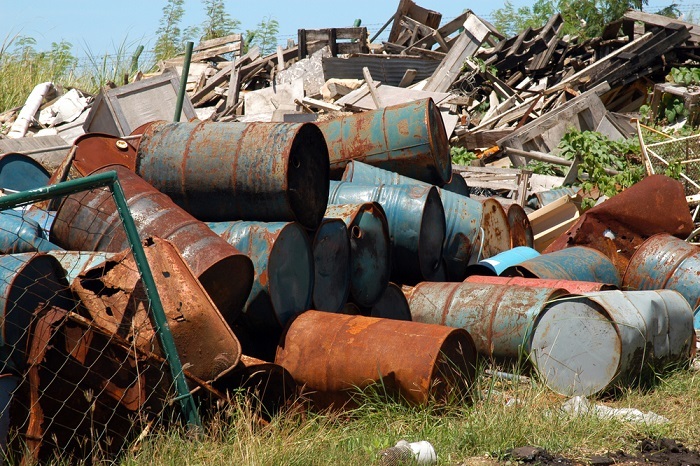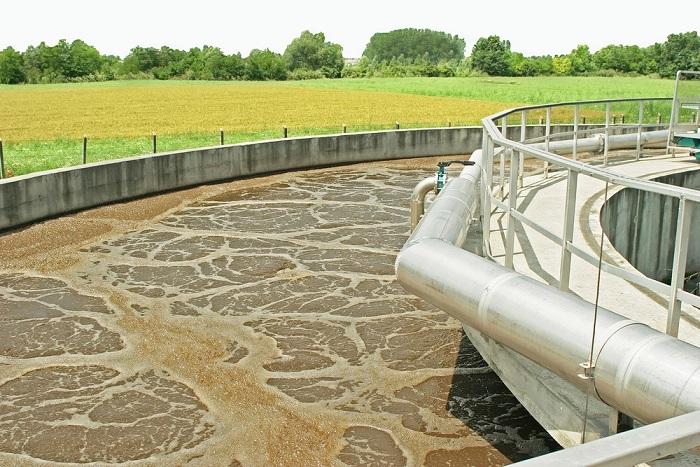
 Data Structure
Data Structure Networking
Networking RDBMS
RDBMS Operating System
Operating System Java
Java MS Excel
MS Excel iOS
iOS HTML
HTML CSS
CSS Android
Android Python
Python C Programming
C Programming C++
C++ C#
C# MongoDB
MongoDB MySQL
MySQL Javascript
Javascript PHP
PHP
- Selected Reading
- UPSC IAS Exams Notes
- Developer's Best Practices
- Questions and Answers
- Effective Resume Writing
- HR Interview Questions
- Computer Glossary
- Who is Who
Treatment of Industrial and Other Wastes
Introduction to Industrial Waste
Due to urbanization and rapid advancements in the industrialization, it has led to an increase in the production and consumption processes resulting in the generation of wastes. These waste are the unwanted and unusable matter that is discarded after its use for main purpose. Over the years, the waste gets accumulated and causes a lot of impact on the environment and health of an individual.
Treatment of waste and its management is generally intended to reduce the effect of waste for mankind. Based on the physical state of material wastes are mainly classified into different types which are solid waste, liquid waste and gaseous wastes.
Solid Waste
These includes latex, paints, tyres, scrap metal etc. Industrial waste is usually a type of solid waste.

Liquid Waste
This waste is in the form of liquid usually referred to as sewage. Few examples include domestic washings, chemicals, oils, hazardous house hold liquids etc.
Gaseous Waste
These are generated in the gaseous form. Examples include carbon monoxide, Sulphur dioxide, NO2, Methane etc.
Industrial activities like manufacturing and processing in many of the chemical plants, cement factories, metallurgic plants, thermal power plant, petroleum, coal, gas, textile industry, food processing industry etc. lead to the generation of waste which is usually referred to as industrial waste. This effluent from the industries is treated before releasing into the external environment as it may contain many of the hazardous chemicals.
Methods for Treatment of Industrial Waste Water
Industrial waste water usually contains high proportions of suspended solids, organic and inorganic solids, alkalinity or acidity. Industrial waste treatment is the preferred method to prevent the pollution. This involves the practice of changing properties of hazardous waste and making it less harmful.
Factors which affect the planning for an industrial waste plant are ?
Discontinuous flow and seasonally discharged waste.
High pollutant concentrations.
Non-biodegradability and toxicity.
Industrial effluent which contains harmful liquid, solid or gaseous compounds may lead to the contamination of surface or underground waters. When the effluent receives at treatment plant, first it is subjected to the physical or mechanical means to remove solid impurities, floating solids, suspensions, oils and fats. These procedures are called as pre-treatment procedures. These includes the following.
Mechanical Screening
It is the first unit operation procedure done in the treatment of waste from the industries. Here a screen which is a device with many openings of uniform size is used to retain coarse solids found in the waste. This step removes large solids like boxes, bottles, tires, cans, metals etc.
Oil Separation
Here the oil discharged from the small-scale industries can be separated from contaminated or open water surfaces through various skimming devices. Here this process separates floatables like non-emulsified oils and organics from the waste. Skimming devices which are used include API (American Petroleum Institute) separators, CPI (Corrugated plate Interceptors) units and Hydro cyclone oil separator.
This waste treatment generally includes one or more of the following processes.
Flow Equalization
It is used when the waste water discharge is not uniform or discontinuous. Hydraulic flow rate of entering effluent is carried out in flow equalization tank to overcome the operational problems which arise form flow variations and improves performance of treatment process at each stage. The design must provide for sufficient mixing to prevent solid decomposition and concentration variations and also to provide aeration to prevent odors. This process can also be done after primary treatment and before the biological treatment procedures.
Neutralization
It is usually done when the industrial effluent contains either excess alkali or acid and is maintained using alkali or acid respectively. Here the process can be done in the equalization tank or separate tank. Hence it neutralizes the pH and removes the chemical impurities by precipitation method.
Physical Treatment
This process helps in removal of particulate material like paper and fecal matter. This includes different processes whose advantage is that very fine or light particles that settle slowly can be removed. They are ?
Sedimentation: This process becomes necessary when the wastewater contains high percentages of suspendable solids which are heavier than water. Primary settling basis is used for separation of grit and particulate matter, activated-sludge settling basin is used for biological matter and coagulation process is used for separation of chemical-floc.
Floatation: This process removes the finer particles. Here the separation is done by introducing fine gas or air bubbles in the liquid phase. These bubbles attach to the fine particles and cause them rise to the surfaces forming a scum blankets. This scum is later removed by using skimming mechanism.
Chemical Treatment
This step is one of the important part of the industrial waste treatment. Sometimes physico-chemical treatments like dissolved air floatation system is used for the industrial waste either in absence of biological treatment or in conjugation with the biological methods. The various physico chemical procedures which are helpful includes ?
Chemical Precipitation - This process helps in sedimentation of unsettleable micro and colloidal impurities. This again includes coagulation, flocculation and precipitation. Here chemicals are added to change the physical state of dissolved and suspended solids.
Reverse Osmosis - Here the dissolved salts in waste water moves from the higher osmotic pressure tank to the lower pressure tanks through a semipermeable membrane made of cellulose acetate.
Chemical oxidation - Here oxidants are used as a first step in the removal of heavy metals which oxidize to organics and in the last step of treatment process to oxidize the odoriferous compounds like H2S and inorganics like cyanide. Here chemicals like Cl, Ozone, sodium and Calcium hypochlorite, Hydrogen peroxide are used to remove ammonia and cyanide.
Adsorption - This process is used to remove non-biodegradable organic matter, color and odor from the industrial waste effluent. Here the waste is passed through the activated carbon. Using activated carbon can also remove VOCs from the waste.
Ion exchange - Here deionization is done by passing the effluent through the beds of synthetic ion exchange resins. Here the anions and cations are exchanged for sodium or hydrogen ions of the resin.
Electrodialysis - Here dissolved salts from the waste are separated by passing the electric current through the tanks installed with ion exchange resins.
Biological Treatment
This treatment procedure is carried out when the industrial waste contains large amounts of biodegradable substances. Here if the waste has BOD to COD ratio of more than 0.6 then this biological treatment procedure is used and if the ratio is less than 0.6 then acclimatization is necessary before the biological treatment. Acclimatization is a seedling or raising initial microbial population under a controlled condition. These treatments process can be done both aerobically and anaerobically.
Some of the aerobic and anaerobic biological treatment methods include ?
Aerobic Methods
Here the sludge is digested under oxygen using the following methods.
Activated Sludge Process
Here the system consists of tank for waste water aeration followed by a settler and a solid recycle line. Waste flows under constant aeration through the activated sludge and exits at the tank at the end of 4-8 hours of residence time.

Sequential Batch Reactor (SBR)
Here also aeration and the sedimentation is carried out. It differs from the sludge process by carrying the processes sequentially in the same tank unlike sludge process where it is carried out in separate tanks. Steps involved here are filling, aeration, settling, decant and idle.
Trickling Filter
These are also called as biological air filters. Here in this system waste water is percolated through the filter bed made up of highly permeable medium to which the micro-organisms are attached forming a bio film layer. There is a top rotary distributor through which the waste is sprinkled on the filter medium. The bio film layer consisting of microbes then degrade the sludge and allows it to percolate through the medium consisting of rocks. This collected liquid at the bottom is passed through the settling tanks where the solids are separated.
Anaerobic Treatment
This method is used for the treatment of high strength organic load. However, many disadvantages are there with this method like growth rate require long detention time and using high temperature. The methane gas produced as an end product is combustible hence useful.
Conclusion
As the waste released from many of the industries is a global concern, industries often carry out the treatment procedures along with the manufacturing operations to reduce the risk of these effluents using many techniques. These treated waste water is then released into other water sources. The treatment of waste water goes through different stages. Waste water is treated to remove physical, chemical and biological contaminants present in it through various processes.

